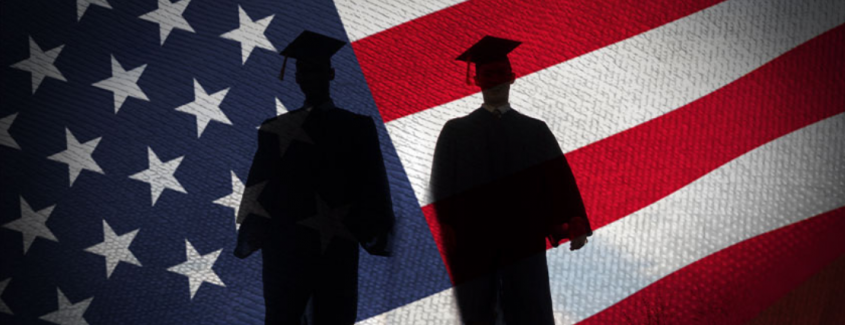
Conservatives, don’t give up on higher education.
That’s essentially the opposite of what conservative political activist Charlie Kirk, leader of the conservative youth organization, Turning Point USA, told a crowd of young people at CPAC, the annual Conservative Political Action Conference. Kirk’s main contentions are that college isn’t really needed for a good career and that college has radicalized youth. My advice is that it’s against the interests of conservatives to follow this advice.
Kirk told the audience that we shouldn’t ask high school students “where they are going to college” but rather “why are you going to college.” Certainly, college costs a lot, and loans for college education can be a great burden—and there are many job opportunities for those who don’t attend college. And I have no hesitation in emphatically saying that college isn’t for everyone.
But college as an investment still makes sense for many people. According to a recent report from the Bureau of Labor Statistics, those with only a high school degree made on average about $720 per week, whereas those with a college degree made around $1200 per week. That’s close to $80,000 per year for a college grad compared to $45,000 for the average high school grad. This pattern has been consistent for a long time. In fact, this phenomenon is so well known among economists that it’s known as the “college premium.” Not only are wages higher on average for college graduates, but the rate of unemployment is consistently much lower (in both boom times and bust times) for those with a college degree.
There are certainly good paying and important jobs that don’t require a college degree. And you can be a great entrepreneur without a college degree. But if you want to be a nurse or an engineer or a teacher or a doctor, then you have to go to college. For conservatives who want important positions like these that serve society and can influence the culture, you have to go to college.
There are also many good paying jobs—including in management and sales—for which companies simply look for someone with a degree. A college degree has become a signal (unfortunately, a very expensive signal) regarding your capacity as an employee.
In fact, a large proportion of students are going to college for practical, career-oriented programs. According to the National Center for Education Statistics, about two million college degrees were awarded in 2017, and about 400,000 of those were in business-related fields, 240,000 were in health-related professions, and 85,000 were in education. The category of “area, cultural, gender and group studies,” which might be the opposite of career-oriented, listed only about 8,000 graduates. College degree programs are not entirely career oriented, but they certainly tend that way.
Kirk’s other claim is that colleges and universities are radicalizing college students and turning them into socialists. He understandably cites the popularity of Bernie Sanders on campus, but, quite significantly, noted in that same speech that there are more Students for Trump chapters on campus than student groups for Sanders. Kirk said at CPAC, “Why would we send our most prized possessions to these universities?”
This criticism doesn’t represent the broader picture of what’s happening on college campuses. To be clear, people with college degrees tend to be more liberal, but college graduates are not uniformly liberal. The Pew Research Center has had significant surveys in which it asks about being conservative or liberal. When you compare Pew’s 2004 with 2015 surveys, there has been an increase of those with a college degree or higher who are categorized as consistently liberal. Among those with a post-graduate degree, the percentage of those who are consistently liberal increased from 19 to 31 percent; in the same survey, the percentage of those who were consistently conservative went from 4 to 10 percent and were mostly conservative went from 11-14 percent. From the 2004 to 2015, if you put together the categories of consistently liberal and mostly liberal, the total percentage doesn’t increase.
There is currently an ‘education gap’ between the parties, but that gap isn’t as dramatic as some would have you believe. Hillary Clinton received about 52 percent of voters with a college degree and President Trump received about 43 percent. That gap between parties among voters with a college degree is a recent phenomenon, showing up in only 2012 and 2016. In the elections from 1992-2008, college graduates split between the parties.
It’s easy to criticize colleges for liberal activism, and campus activism can certainly be outrageous. Nonetheless, many individuals and society as a whole will be worse off if conservatives walk away from higher education.

